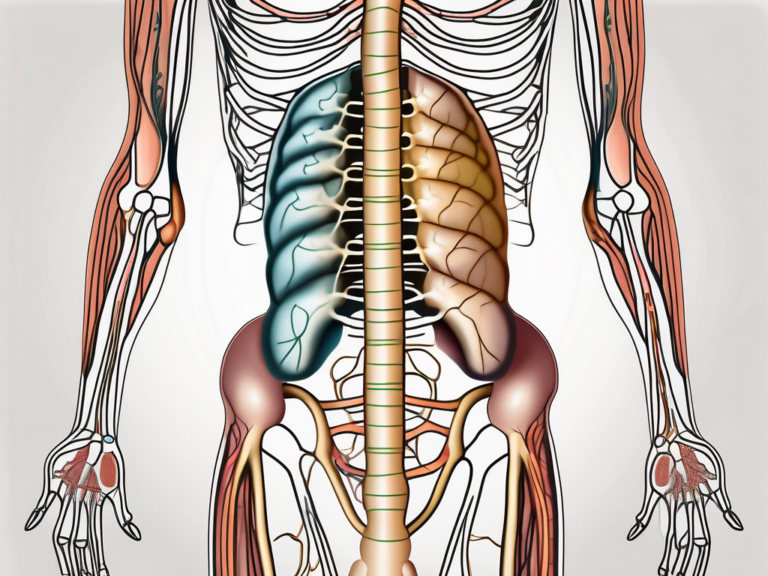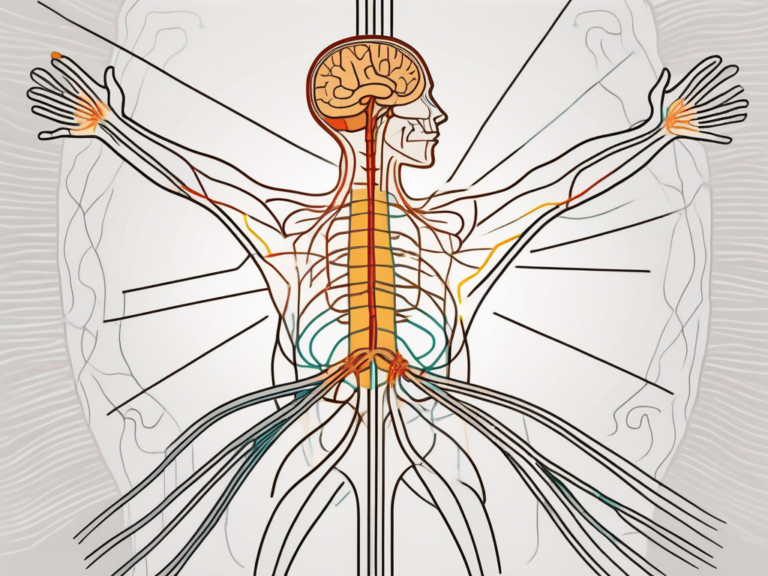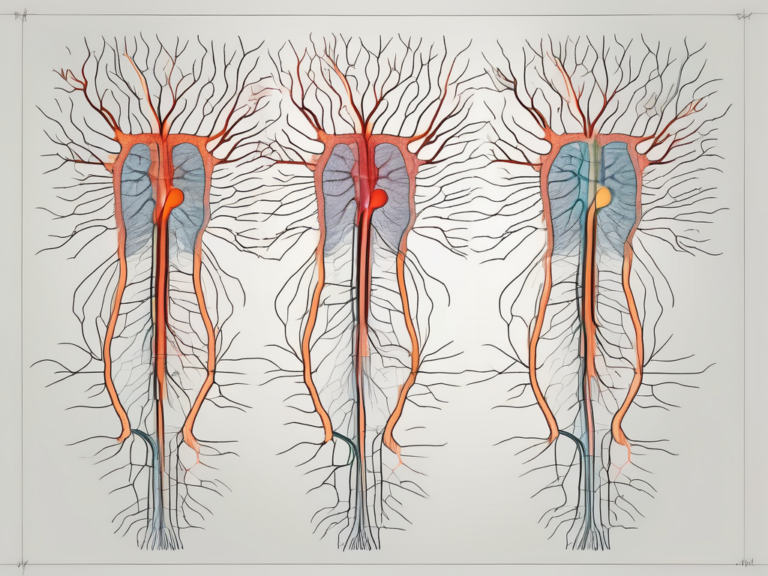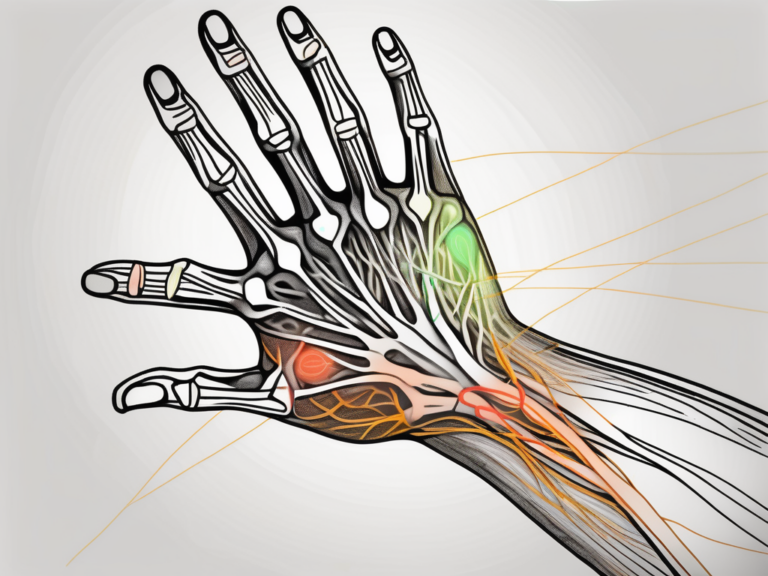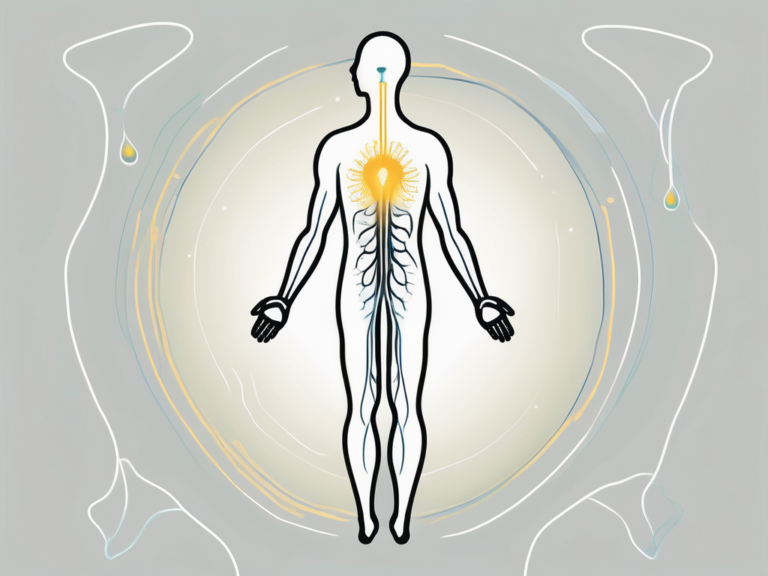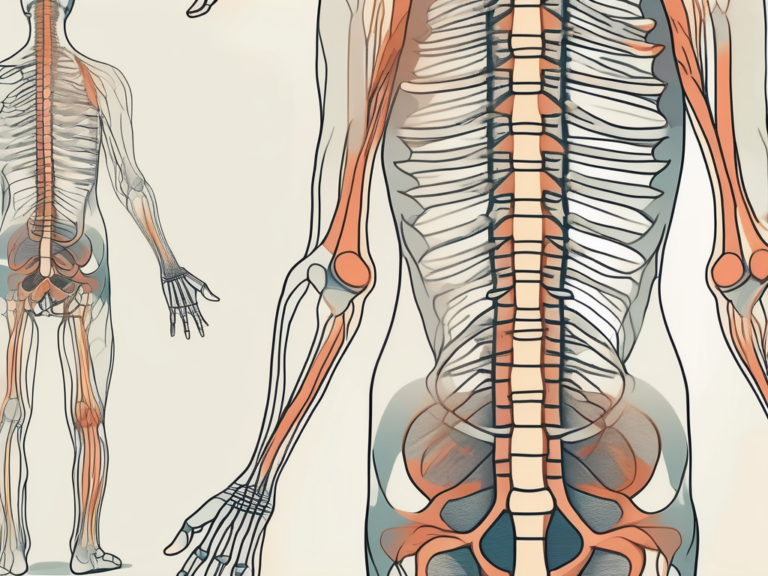How Effective Is Sacral Nerve Stimulation?
Sacral Nerve Stimulation (SNS) is a procedure that has gained attention in recent years for its potential effectiveness in treating various conditions related to the pelvic region. But just how effective is SNS? In this article, we will explore the science behind sacral nerve stimulation, evaluate its effectiveness, discuss potential side effects and risks, compare it to other treatments, identify who can benefit from it, and speculate on the future of this innovative procedure.
Understanding Sacral Nerve Stimulation
Sacral Nerve Stimulation (SNS) is a revolutionary medical procedure that has brought hope and relief to countless individuals suffering from pelvic disorders. This innovative treatment involves the implantation of a small device, similar to a pacemaker, that delivers electrical impulses to the sacral nerves. These nerves, nestled near the base of the spine, play a crucial role in controlling bladder and bowel function, as well as sexual sensation. By modulating the activity of these nerves, SNS aims to alleviate symptoms and improve the overall quality of life for those affected by these conditions.
But how does this remarkable procedure actually work? Let’s delve into the science behind Sacral Nerve Stimulation to gain a deeper understanding of its mechanisms and benefits.
The Science Behind Sacral Nerve Stimulation
Extensive research and studies have shed light on the intricate workings of Sacral Nerve Stimulation. It is believed that this procedure works by interrupting abnormal nerve signals and restoring normal communication between the brain, spinal cord, and pelvic organs. The electrical stimulation provided by the implanted device helps to regulate the neural pathways involved in bladder and bowel control, effectively reducing symptoms such as urinary incontinence, bowel dysfunction, and pelvic pain.
By precisely modulating the electrical impulses delivered to the sacral nerves, SNS can restore the delicate balance of neural activity, allowing individuals to regain control over their bladder and bowel functions. This innovative treatment has shown remarkable success rates, offering hope to those who have been living with the debilitating effects of pelvic disorders.
The Procedure of Sacral Nerve Stimulation
The implantation of a sacral nerve stimulation device is a meticulously performed procedure carried out by a qualified healthcare professional. Typically done under a local anesthetic, this minimally invasive surgery involves making a small incision near the buttocks. Through this incision, a lead wire is carefully placed near the sacral nerves, ensuring precise positioning for optimal effectiveness.
Once the lead wire is in place, it is connected to the implanted device, which is usually positioned in the upper buttocks or lower abdomen. This device, similar in size to a pacemaker, is designed to deliver electrical impulses to the sacral nerves, effectively modulating their activity. The procedure is completed with great care and attention to detail, ensuring the patient’s comfort and safety throughout.
One of the remarkable aspects of Sacral Nerve Stimulation is the ability to make adjustments to the stimulation parameters remotely. This means that healthcare professionals can fine-tune the treatment without the need for additional invasive procedures. By remotely optimizing the stimulation parameters, the effectiveness of the treatment can be maximized, while minimizing any discomfort or inconvenience for the patient.
It is important to note that Sacral Nerve Stimulation is a highly specialized procedure that requires the expertise of trained healthcare professionals. The decision to undergo this treatment should be made in consultation with a qualified medical practitioner who can assess the individual’s specific condition and determine if SNS is the right course of action.
In conclusion, Sacral Nerve Stimulation is a groundbreaking procedure that has revolutionized the treatment of pelvic disorders. By modulating the activity of the sacral nerves, SNS offers hope and relief to those who have been living with the debilitating effects of urinary incontinence, bowel dysfunction, and pelvic pain. With its remarkable success rates and the ability to remotely optimize treatment parameters, Sacral Nerve Stimulation has emerged as a beacon of hope for individuals seeking a better quality of life.
Evaluating the Effectiveness of Sacral Nerve Stimulation
Assessing the effectiveness of Sacral Nerve Stimulation (SNS) involves considering several factors, including success rates and long-term and short-term outcomes. However, delving deeper into the topic reveals a wealth of information that can help healthcare professionals and patients make informed decisions.
Measuring Success Rates
Studies have demonstrated varying success rates for SNS, depending on the specific condition being treated. For example, when used to treat overactive bladder, success rates range from 60 to 90%. However, it is important to note that individual results may vary, and success rates may be influenced by factors such as patient selection and the presence of underlying medical conditions.
Further research has shown that success rates can also be affected by the duration of the condition and the severity of symptoms. Patients who have had chronic overactive bladder symptoms for a longer period may experience slightly lower success rates compared to those with recent onset symptoms. Additionally, patients with more severe symptoms may require additional treatments or adjustments to achieve the desired outcomes.
Moreover, success rates can be influenced by the expertise and experience of the healthcare professionals performing the SNS procedure. Studies have shown that centers with a higher volume of SNS procedures tend to have better success rates, suggesting that the skill and familiarity of the medical team play a crucial role in achieving positive outcomes.
Long-term and Short-term Effectiveness
When considering the effectiveness of SNS, it is essential to evaluate both short-term and long-term outcomes. In the short term, many patients report substantial improvements in symptoms shortly after undergoing the procedure. This immediate relief can have a significant impact on a patient’s quality of life, allowing them to regain control over their bladder function and reduce the frequency and urgency of urination.
However, long-term effectiveness varies among individuals, with some experiencing sustained symptom relief while others may require additional treatments or adjustments to maintain the desired results. Factors such as the underlying cause of the condition, the patient’s overall health, and their adherence to post-procedure care instructions can all influence the long-term effectiveness of SNS.
Research has shown that patients with certain conditions, such as interstitial cystitis or fecal incontinence, may experience more variable long-term outcomes compared to those with overactive bladder. This highlights the importance of individualized treatment plans and ongoing monitoring to ensure optimal results.
Furthermore, long-term studies have indicated that the benefits of SNS can extend beyond symptom relief. Some patients have reported improvements in their overall quality of life, including reduced anxiety and depression related to their bladder or bowel dysfunction. These psychological benefits can have a profound impact on a patient’s well-being and should be considered when evaluating the effectiveness of SNS.
In conclusion, evaluating the effectiveness of Sacral Nerve Stimulation involves considering various factors, such as success rates and long-term and short-term outcomes. By exploring the nuances of these factors, healthcare professionals and patients can gain a deeper understanding of the potential benefits and limitations of SNS, allowing for more informed decision-making and improved patient care.
Potential Side Effects and Risks
As with any medical procedure, there are potential side effects and risks associated with sacral nerve stimulation.
Sacral nerve stimulation (SNS) is a treatment option that involves the implantation of a device to stimulate the sacral nerves, which are responsible for controlling the bladder and bowel function. While SNS has been proven to be effective in treating conditions such as overactive bladder and fecal incontinence, it is important to be aware of the potential side effects and risks.
Common Side Effects
Common side effects of SNS include mild pain or discomfort at the site of implantation. This is a normal response to the surgical procedure and can be managed with pain medication prescribed by your healthcare professional. Additionally, temporary changes in bowel or bladder function may occur as the body adjusts to the stimulation. These changes are usually temporary and resolve with time as the body adapts to the new treatment.
In some cases, patients may experience skin irritation or infection at the incision site. It is important to keep the incision site clean and follow the post-operative care instructions provided by your healthcare professional to minimize the risk of infection. If you notice any signs of infection, such as redness, swelling, or discharge, it is important to contact your healthcare professional immediately for further evaluation and treatment.
Serious Risks and Complications
Although rare, there are more serious risks and complications associated with SNS that should be considered when deciding on this treatment option. One potential risk is lead migration, where the implanted leads move from their original position. This can result in a loss of stimulation or the need for additional surgery to reposition the leads.
Nerve damage is another potential complication of SNS. The sacral nerves are delicate and can be damaged during the implantation procedure. This can lead to a loss of sensation or function in the bladder or bowel. While this is a rare occurrence, it is important to discuss this risk with your healthcare professional before undergoing the procedure.
Infection is a risk with any surgical procedure, including SNS. Despite precautions taken to minimize the risk of infection, there is still a small chance that bacteria can enter the body and cause an infection at the implantation site. Signs of infection may include increased pain, redness, swelling, or fever. If you experience any of these symptoms, it is important to seek medical attention promptly.
Bleeding is another potential risk associated with SNS. During the implantation procedure, blood vessels may be damaged, leading to bleeding. While this is usually minor and resolves on its own, in rare cases, it may require medical intervention.
Lastly, some individuals may have an allergic reaction to the implanted materials used in SNS. This can cause symptoms such as rash, itching, or difficulty breathing. If you have a known allergy to any materials, it is important to inform your healthcare professional before undergoing the procedure.
It is essential to discuss these potential risks and complications with a healthcare professional when considering SNS as a treatment option. They will be able to provide you with more detailed information based on your specific medical history and help you make an informed decision about whether SNS is the right choice for you.
Comparing Sacral Nerve Stimulation to Other Treatments
When exploring treatment options for pelvic-related disorders, it is important to consider how Sacral Nerve Stimulation (SNS) compares to other available treatments. This comparison can help patients and healthcare providers make informed decisions about the most suitable treatment approach.
Traditional Treatments vs. Sacral Nerve Stimulation
Traditional treatments for conditions such as overactive bladder or fecal incontinence include lifestyle modifications, medications, and behavioral therapy. These treatments aim to manage symptoms and improve quality of life. While these approaches can provide relief for some patients, they may not be effective for everyone. This is where Sacral Nerve Stimulation comes into play.
Sacral Nerve Stimulation offers a non-invasive alternative that may be more effective in cases where traditional treatments have failed. By targeting the sacral nerves, which play a crucial role in controlling bladder and bowel function, SNS can help regulate these functions and alleviate symptoms. This innovative treatment involves the implantation of a small device that delivers electrical impulses to the sacral nerves, helping to restore normal bladder and bowel control.
One of the advantages of Sacral Nerve Stimulation is its ability to provide long-term relief for patients who have not responded well to other treatments. Research has shown that SNS can significantly reduce symptoms such as urinary urgency, frequency, and incontinence, as well as improve bowel control. This can have a profound impact on a patient’s quality of life, allowing them to regain control and participate in daily activities without the constant worry and inconvenience caused by pelvic-related disorders.
Emerging Treatments in Comparison
In recent years, other emerging treatments, such as botox injections or peripheral nerve stimulation, have shown promise in treating pelvic-related conditions. Botox injections, for example, work by temporarily paralyzing the muscles responsible for bladder or bowel control, thereby reducing symptoms. Peripheral nerve stimulation involves the use of a small device that delivers electrical impulses to the nerves outside the spinal cord, aiming to modulate their activity and improve bladder or bowel function.
While these emerging treatments offer potential benefits, their effectiveness and long-term outcomes are still being studied. This is where Sacral Nerve Stimulation stands out. Unlike these newer approaches, SNS has an established track record, with decades of research supporting its effectiveness and safety. Numerous clinical studies have demonstrated the positive impact of SNS on patients’ lives, providing evidence of its long-term benefits.
Furthermore, Sacral Nerve Stimulation is a reversible treatment option. If a patient finds that SNS does not provide the desired results or experiences any adverse effects, the device can be easily removed, allowing them to explore other treatment alternatives without any permanent changes to their anatomy.
In conclusion, when comparing Sacral Nerve Stimulation to other treatments for pelvic-related disorders, it is clear that SNS offers a well-established, effective, and safe alternative. While traditional treatments and emerging therapies have their merits, SNS provides a unique approach that can significantly improve bladder and bowel control, leading to a better quality of life for patients who have not found relief with other options.
Who Can Benefit from Sacral Nerve Stimulation?
While Sacral Nerve Stimulation (SNS) may be a viable option for many individuals suffering from pelvic disorders, it is not suitable for everyone. However, for those who meet the criteria, SNS can offer significant relief and improvement in their quality of life.
Ideal Candidates for Sacral Nerve Stimulation
Ideal candidates for SNS are those who have failed conservative treatments or are unable to tolerate medications due to side effects. These individuals have often exhausted other options and are seeking a more effective and long-term solution to their pelvic disorders.
Furthermore, individuals who experience a significant impact on their quality of life due to bladder or bowel dysfunction may also benefit from SNS. These conditions can greatly affect daily activities, social interactions, and overall well-being. SNS can provide them with the opportunity to regain control and independence in their lives.
Conditions Treated with Sacral Nerve Stimulation
SNS has been proven effective in treating various conditions, offering hope to those who have been struggling with pelvic disorders. Some of the conditions that can be successfully managed with SNS include:
- Overactive Bladder: SNS can help regulate bladder function, reducing the frequency and urgency of urination. This allows individuals to regain control over their bladder and avoid embarrassing situations.
- Fecal Incontinence: SNS can improve the coordination of the muscles involved in bowel movements, reducing or eliminating episodes of fecal incontinence. This can significantly improve the individual’s confidence and quality of life.
- Urinary Retention: SNS can help stimulate the nerves responsible for bladder emptying, allowing individuals to overcome urinary retention and avoid complications such as urinary tract infections.
- Chronic Pelvic Pain: SNS has shown promising results in managing chronic pelvic pain, providing relief to individuals who have been suffering from this debilitating condition for a long time.
- Interstitial Cystitis: SNS can help alleviate the symptoms of interstitial cystitis, a chronic condition characterized by bladder pain and urinary frequency. By modulating the nerve signals, SNS can bring relief and improve the individual’s quality of life.
It is important to note that the appropriateness of Sacral Nerve Stimulation as a treatment option should be determined on an individual basis. Consulting with a healthcare professional who specializes in pelvic disorders is essential to assess the specific needs and circumstances of each patient.
Overall, Sacral Nerve Stimulation has emerged as a promising solution for individuals suffering from pelvic disorders. By targeting the sacral nerves, this innovative treatment approach offers hope and relief to those who have been struggling with the debilitating symptoms of various conditions. With proper evaluation and guidance from healthcare professionals, individuals can explore the potential benefits of SNS and make informed decisions about their treatment options.
The Future of Sacral Nerve Stimulation
As technology and medical knowledge continue to advance, the future of sacral nerve stimulation holds great promise.
Advances in Technology and Procedure
Ongoing research aims to improve the design and functionality of SNS devices, making them smaller, more efficient, and longer-lasting. Additionally, refinements in the implantation procedure may reduce the risk of complications, making SNS an even more attractive option for patients.
Predicted Trends in Usage and Effectiveness
As awareness of SNS grows and more healthcare professionals become trained in performing the procedure, it is expected that the usage of SNS will increase. Moreover, ongoing studies and clinical trials will continue to refine our understanding of the long-term effectiveness and potential applications of sacral nerve stimulation.
In conclusion, sacral nerve stimulation shows great potential in effectively treating various pelvic disorders. However, its effectiveness may vary among individuals, and it is crucial to have a thorough consultation with a healthcare professional to determine whether SNS is a suitable option. While the procedure carries some risks and potential side effects, its benefits can be life-changing for those who have exhausted other treatment options. As technology advances and our understanding of SNS deepens, we can anticipate ongoing improvements in both the procedure itself and its long-term effectiveness.

